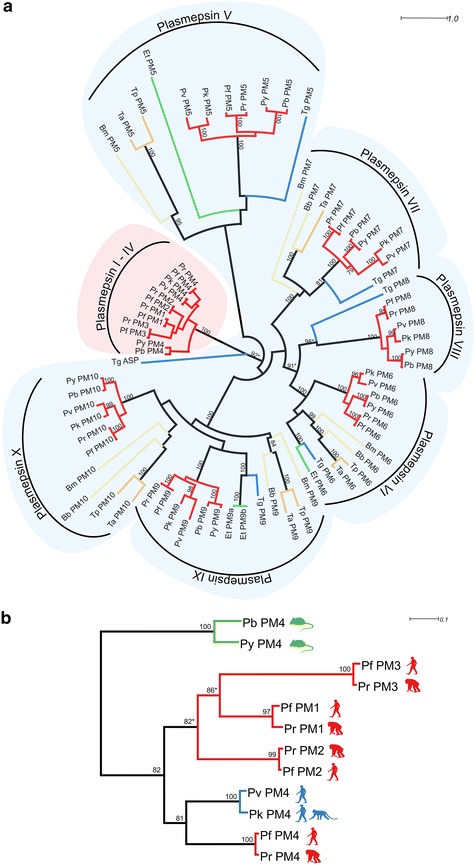Fig. 2.

Haemoglobin-specific plasmepsin expansion in Plasmodium falciparum. a ML phylogenetic tree of plasmepsin. ML support value above 75 % based on 100 replicates bootstrap is shown on the branch except plasmepsin I-IV clade. Plasmodium species are grouped with the homologues from other members of Apicomplexa with one gene from each species. The tree shows separation of P. falciparum food vacuole plasmepsins (pink area) from plasmepsins localized in other cellular compartments or with different functions (light blue area). Sequences shown here were given code name according to their phylogenetic association with P. falciparum plasmepsin (see Additional file 1). Red branch: Pf P. falciparum, Pr P. reichenowi, Pv P. vivax, Pk P. knowlesi, Pb P. berghei, Py P. yoelii, Yellow branch: Bb B. bovis, Bm B. microti, Orange branch: Tp T. parva, Ta T. annulata, Green branch: Et E. tenella, Blue branch: Tg T. gondii. b ML phylogenetic tree specific to Plasmodium plasmepsins shows the expansion of food vacuole plasmepsins in the P. falciparum/P. reichenowi lineage (red branch). P. vivax/P. knowlesi (blue branch) and P. berghei/P. yoelii (green branch) have only one plasmepsin gene in this clade. ML support value above 75 % based on 100 replicates bootstrap is shown on the branch. Star indicates that the node has <75 % bootstrap support based on 1000 replicates for NJ tree
